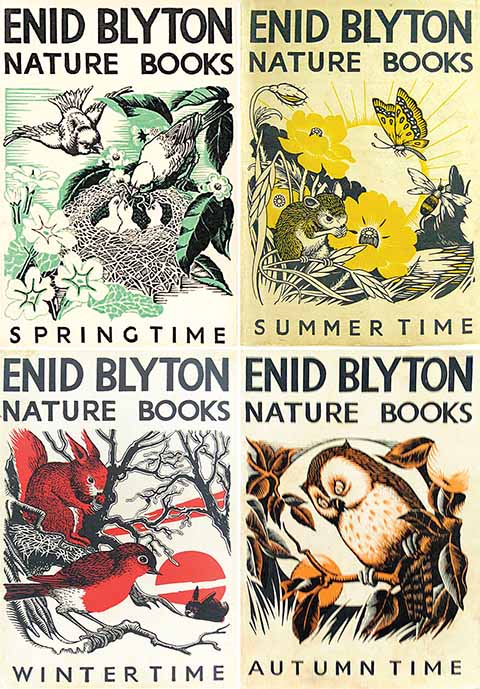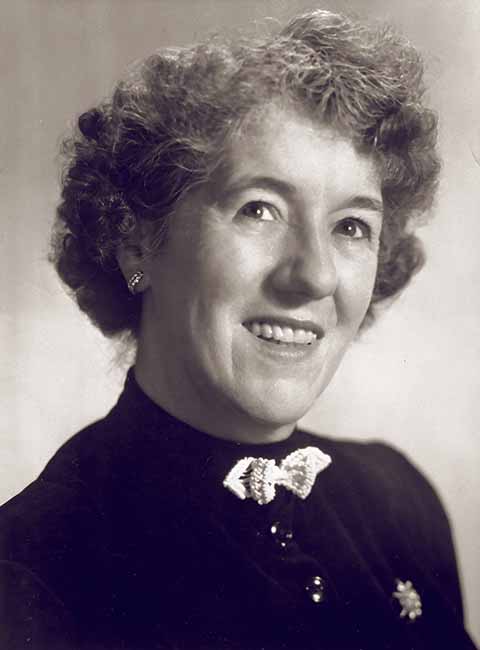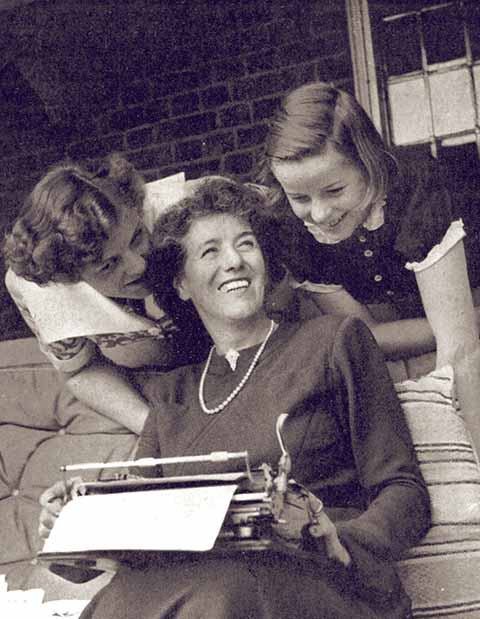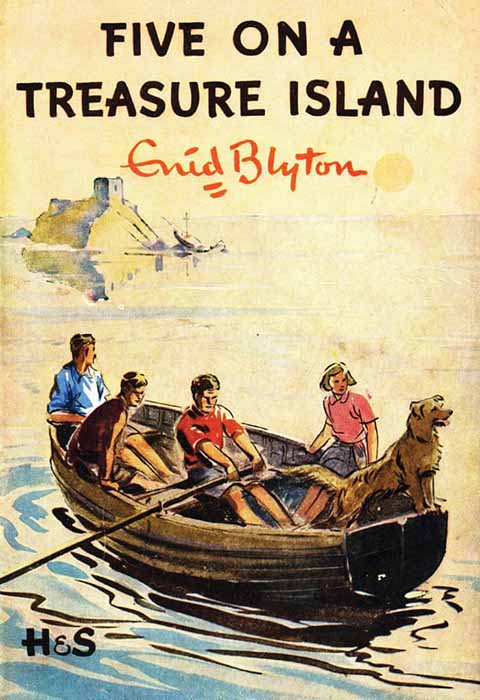Enid Blyton, Dorset and its fauna and flora
Tracy Gorman looks at a hitherto little-known element of the children’s author’s life
Published in July ’19
Enid Blyton’s books have sold more than 600 million copies, making her currently the seventh bestselling fiction author of all time, and she is one of a handful of British women to have become a true literary icon. Yet there are still aspects of Blyton’s life that many people know little about: for instance, that she was an avid admirer of nature from childhood.
She loved the appeal of the open country and had an enormous affinity with her surroundings, especially the county of Dorset, where she developed a love of its rugged coastlines, dramatic landscapes and fairy-tale castle. She holidayed regularly in the Purbeck countryside and grew so enamoured with the area that it became the inspiration for some of her most celebrated books. In the words of Andrew Norman in his book, Enid Blyton and her Enchantment with Dorset: ‘Dorset was a place she loved and enjoyed for holidays over many years…. While she was there, her conscious mind was committing images of the Dorset countryside and its people into her sub-conscious…to be “got in touch with” later when they would re-appear in her books.’

Blyton’s earliest publications were nature books aimed at children, a theme and an audience she returned to repeatedly
It was in 1931, at the age of 34, that Blyton took a holiday in Dorset and instantly fell in love with its breathtaking scenery. For one so creative and nature-minded, the county must have seemed like paradise. As Andrew Norman put it, it was ‘a holiday in Dorset which would change her life, not only by giving her a deep and abiding love for that county, but also by inspiring her to write what is arguably her most memorable collection of books.’

A publicity shot of the author, whose works sold more than 600 million copies. Credit: Hodder&Stoughton
Norman is referring to the wildly popular Famous Five series of books and his assertions are backed up by Blyton’s daughter, Gillian, who, on recalling a trip to Dorset and the creation of Blyton’s first Famous Five book, Five on a Treasure Island (1942), said: ‘I think that things we had seen down here somehow percolated into that book.’ Gillian went on to add: ‘I’m sure that Corfe Castle must have been the picture her imagination showed her of the castle on Kirrin Island,’ the fictional setting for that book.
However, the Famous Five books were not the only works that were based on Blyton’s experiences in Dorset. Enid once told a Swanage reporter that a local PC she saw roaming through Studland was the stimulus for the infamous character, ‘PC Plod’, from her Noddy series of books. Dorset life seems to have slotted perfectly into Blyton’s imaginative world.
Blyton was so infatuated with Dorset that in 1950, her second husband, Kenneth Darrell Waters, purchased the Isle of Purbeck Golf Club, and, in the words of Andrew Norman, ‘Enid took a keen interest in the wide variety of flora and fauna to be found in the vicinity of the golf course.’ Together the couple also bought a farm in Sturminster Newton.
When she visited the county, Blyton spent much of her time exploring the landscape and swimming in its sea. Gillian recalls her having swum around both piers at Swanage. Dorset afforded a lifestyle that Blyton could only have previously dreamed about. It is easy to stand at Swanage railway station, or in the centre of a small Dorset village and imagine oneself to be in the scene of a Famous Five book. The rolling hills, picturesque villages and idyllic steam trains that define Dorset are indicative of so much of Blyton’s work.
As a child, Enid had a close relationship with her father, Thomas Carey Blyton. Thomas had interests in writing and art, but he was also a keen naturalist and gardener. He spent a great deal of his time outdoors and often took his daughter on long walks through the English countryside, familiarising her with birds, animals, plants and wild flowers. In Norman’s book, Gillian explains: ‘Enid accompanied her father everywhere. [He] loved wildlife and nature, and taught her everything he knew, giving her a knowledge of and love for the subject which never left her.’
Enid herself recalled the time she spent with her father fondly in her autobiography, The Story of my Life (1952). But when her parents separated and her father left the family home, Blyton must have missed those long country walks. Her mother, Theresa Mary Blyton, was not a creative person and did not share her daughter’s love of the outdoors. Instead, she insisted that her daughter take more of an interest in domestic activities, such as cooking, cleaning and other household chores. According to the Enid Blyton Society: ‘Enid was now more than ever at the mercy of her mother, with whom she did not see eye to eye. To assuage her unhappiness, she took to locking herself in her bedroom and writing compulsively, setting a pattern which was to be repeated in adulthood.’
As far as school went, Blyton was remarkably clever and excelled in art and nature studies. She also loved to read, particularly enjoying stories relating to children. When she went on to complete teacher training, she attained, amongst other things, a distinction in Zoology and a first in Botany. Fans of the Famous Five or Malory Towers books may be surprised to know that one of her first publications was The Zoo Book (1924), an educational book published by George Newnes. It was at George Newnes that Blyton met her first husband, Major Hugh Alexander Pollock, who was editor of the book department. Blyton went on to publish a total of 31 nature books, including The Bird Book (1926) and Nature Lover’s Book (1944). On occasion, she also adopted the pseudonym, Mary Pollock.
As for Dorset, there is little doubt that Blyton’s visit here in 1931 played a pivotal role in her achievements. The Dorset landscape provided a foundation on which her imagination could build. Its crumbling cliffs and smooth sandy beaches each nurtured her creativity and provided inspiration for some of her most prominent works. But it is Blyton’s love of the outdoors and her eloquent descriptions of wildlife that gave her story-telling an added edge, endowing her works with a lyrical quality when it came to natural things.
Her poem, ‘The Blackbird is Singing’, is a prime example of Blyton’s intense passion for the flora and fauna around her, and her ability to convey it in a way that is at the same time lyrical and simple to understand. It is also an acrostic that wishes the reader a Happy New Year:
‘Here’s the New Year – now what will it bring?
Apples in autumn, bluebells in spring,
Pussy-palm soft as a grey kitten’s fur,
Poppies a-dancing when summer winds stir,
Yellow-clad fields where the butter-cups gleam,
New little ducks on the chattering stream,
Eggs in the hedgerows, lambs skipping by,
Woods full of primroses, little and shy.
Yellow bees droning in summery heat,
Early nuts ripening, blackberries sweet;
All these and more the New Year is bringing –
Really, no wonder the blackbird is singing!’
Whatever their age, fans of Blyton are surely indebted to Dorset’s outstanding countryside that inspired her – and not only its countryside: Blyton may have been born and raised in London, but she was clearly captivated also by the county’s fauna and flora. As Andrew Norman put it, ‘Although Enid’s stories were drawn from her imagination, this itself was fed and nurtured by external experiences, in the case of the Famous Five books, largely by what she had seen
in Dorset.’




